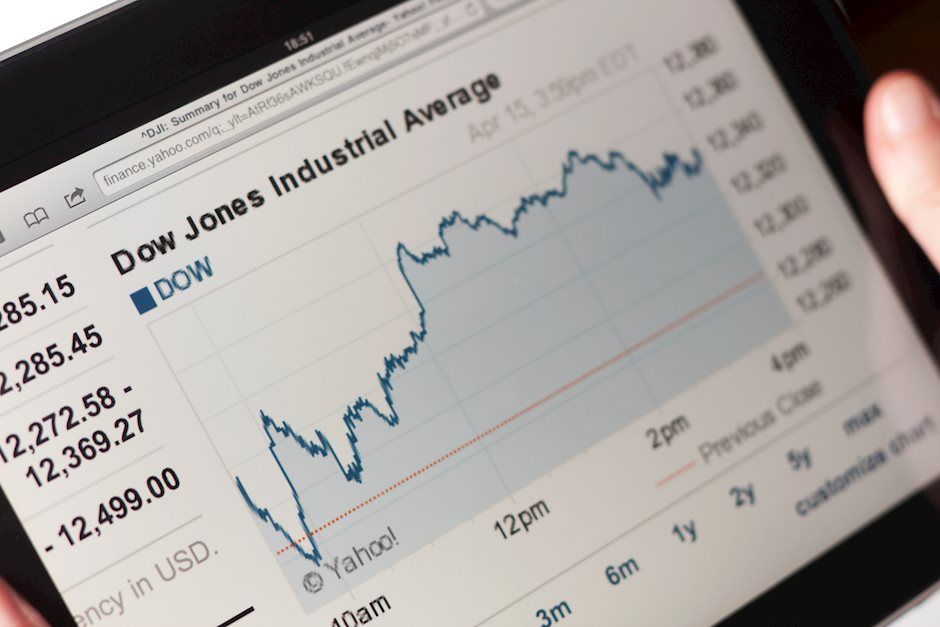Dow Jones Industrial Average climbs 500 points in post-Fed splurge
- The Dow Jones broke above 42,000 to set a third straight all-time high on Thursday.
- Equities are firmly bullish after the Fed’s long-awaited rate cut this week.
- The Fed’s jumbo 50 bps cut on Wednesday has paved the way for further cuts this year.

The Dow Jones Industrial Average (DJIA) pierced the 42,000 psychological level on Thursday as equities drove higher in a broad-market bull run after the Federal Reserve (Fed) finally delivered its first rate cut in over four years. Equities have gone full-tilt into a risk-on stance, and the Dow Jones is on pace to close up nearly 500 points in record territory.
On the data side, US Initial Jobless Claims eased back to 219K for the week ended September 13, down from the previous week’s revised 231K and under the median market forecast of 230K. The Philadelphia Fed Manufacturing Survey for September also printed well above expectations, with the spread index of manufacturing conditions improving to 1.7 from the previous seven-month low of -7.0 and handily beating the expected print of -1.0.
Fed Chair Jerome Powell convinced markets that the Fed’s outsized jumbo cut of 50 bps this week wasn’t a snap response to deteriorating economic conditions but rather an attempt to get ahead of the curve and bolster the US labor market. Powell successfully floated a rebranding of an entire half-percentage-point cut as a “recalibration,” and investors rewarded the Fed’s latest narrative pivot by plowing cash into equities across the board.
Dow Jones news
Despite some securities stuck stubbornly in the red, most of the Dow Jones board is deep in the green on Thursday. Salesforce (CRM) and Caterpillar (CAT) have climbed over 5% from the morning’s open, tapping $266 and $373 per share, respectively. Salesforce is on the rise despite an announcement that Disney (DIS) would be ceasing their use of Salesforce-owned Slack as a company communication product after a security exploit allowed a hacking entity to capture and leak a terabyte of company information.
Dow Jones price forecast
With Dow Jones climbing around 600 points at its highest on Thursday, the major equity index is on pace to capture yet another record close as price action digs in north of 42,000. The Dow Jones’ stellar 2024 performance is continuing unabated, with the stock board set to close in the green for a fifth straight month.
Buyer exhaustion continues to threaten intraday positions built up from the midweek pullback into 41,500. However, any real threat would first require enough short pressure to get baked into the chart, a difficult proposition with current prices facing no technical resistance and the Dow Jones trading a blistering 8% above the long-term 200-day Exponential Moving Average (EMA) at 38,656.
Dow Jones daily chart

Fed FAQs
Monetary policy in the US is shaped by the Federal Reserve (Fed). The Fed has two mandates: to achieve price stability and foster full employment. Its primary tool to achieve these goals is by adjusting interest rates. When prices are rising too quickly and inflation is above the Fed’s 2% target, it raises interest rates, increasing borrowing costs throughout the economy. This results in a stronger US Dollar (USD) as it makes the US a more attractive place for international investors to park their money. When inflation falls below 2% or the Unemployment Rate is too high, the Fed may lower interest rates to encourage borrowing, which weighs on the Greenback.
The Federal Reserve (Fed) holds eight policy meetings a year, where the Federal Open Market Committee (FOMC) assesses economic conditions and makes monetary policy decisions. The FOMC is attended by twelve Fed officials – the seven members of the Board of Governors, the president of the Federal Reserve Bank of New York, and four of the remaining eleven regional Reserve Bank presidents, who serve one-year terms on a rotating basis.
In extreme situations, the Federal Reserve may resort to a policy named Quantitative Easing (QE). QE is the process by which the Fed substantially increases the flow of credit in a stuck financial system. It is a non-standard policy measure used during crises or when inflation is extremely low. It was the Fed’s weapon of choice during the Great Financial Crisis in 2008. It involves the Fed printing more Dollars and using them to buy high grade bonds from financial institutions. QE usually weakens the US Dollar.
Quantitative tightening (QT) is the reverse process of QE, whereby the Federal Reserve stops buying bonds from financial institutions and does not reinvest the principal from the bonds it holds maturing, to purchase new bonds. It is usually positive for the value of the US Dollar.
Author

Joshua Gibson
FXStreet
Joshua joins the FXStreet team as an Economics and Finance double major from Vancouver Island University with twelve years' experience as an independent trader focusing on technical analysis.

















